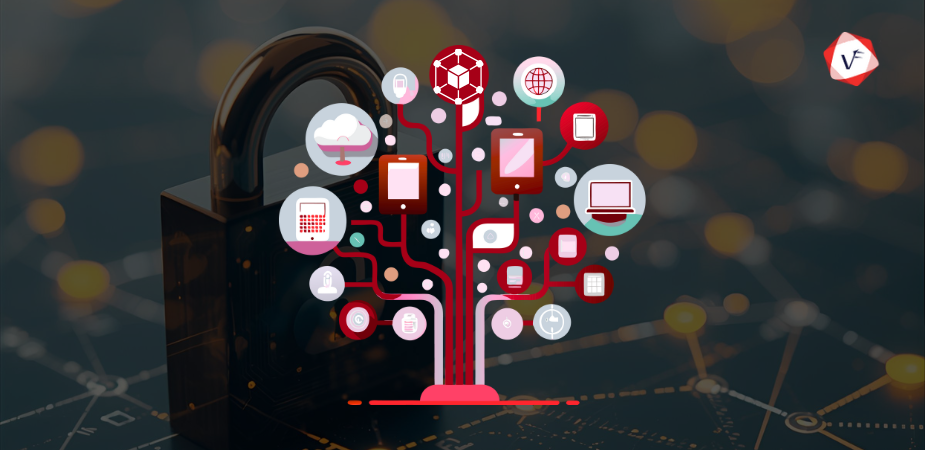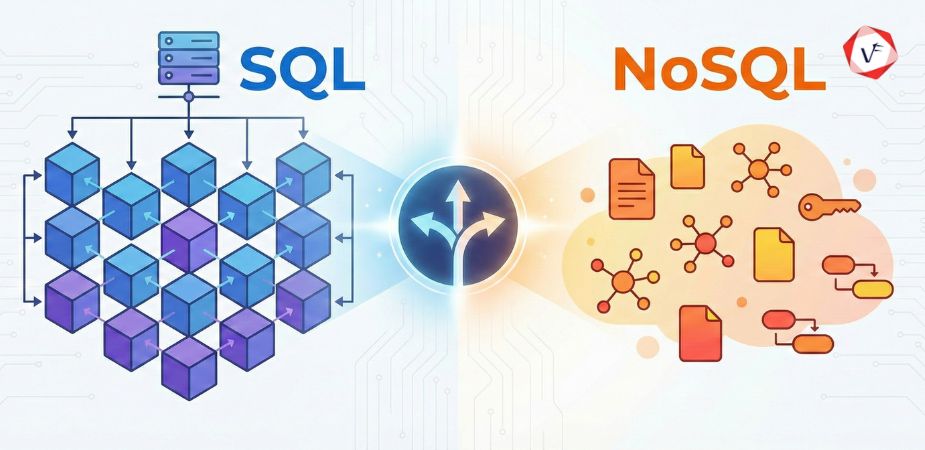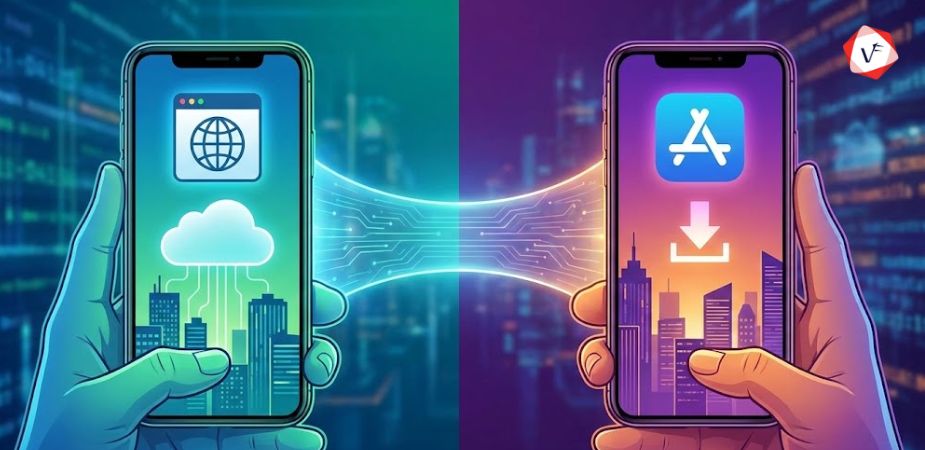- October 24, 2025 2:25 pm
- by Safvana
- October 24, 2025 2:25 pm
- by Manek

The world is becoming smarter every day. From smartwatches and voice assistants to connected cars and factory machines, the Internet of Things (IoT) is growing fast. By 2025, experts say there could be more than 75 billion connected devices around the world.
That's a lot of devices and a lot of data moving around.
But there's a problem: many of these devices aren't very secure. Hackers can break in, steal data, or even take control of the devices. That's why we need a strong system to protect IoT. This is where the IoT Security Framework comes in.
In 2025, three major technologies are helping to build this framework: Blockchain, Artificial Intelligence (AI), and Encryption.
Imagine someone hacking into your smart door lock and opening it without your permission. Or someone spying through your baby monitor. Or even worse—hacking a hospital's medical devices or a city's traffic lights.
These things may sound extreme, but they have already happened.
IoT devices collect and share a lot of personal and sensitive information. Some track your health, your location, your habits, or even your voice and face. Others control machines in factories, cars, and hospitals.
If these devices are not protected, they can be used to:
This is why IoT security is not just a "tech issue." It's a safety issue for people, businesses, and governments.
Here are some of the main risks facing IoT devices today:
Many devices use default or easy passwords like "1234" or "admin." Hackers can guess them in seconds.
Devices that don't get regular updates are left with holes that hackers can use to get in.
If the data from your device isn't encrypted, it can be read by anyone who intercepts it.
Hackers take control of thousands of devices and use them to attack websites or other networks.
A hacker could create a fake device that pretends to be part of your system—and once it's in, it can steal data or cause damage.
Sometimes, devices are hacked during manufacturing or while being shipped.
As IoT continues to grow, these problems will only get worse—unless we build smarter security systems.
Blockchain is a way to store data so that it can't be changed or faked. It works by grouping data into "blocks," which are linked together like a chain. Once data is added to the chain, it's locked in.
This system is already used in cryptocurrencies like Bitcoin, but it's also very useful for IoT.
Blockchain allows all connected devices to agree on what data is real. This makes it very hard for anyone to add fake information or hide changes.
There's no single server or company that controls everything. So even if one device is hacked, the others still have a record of what's correct.
Each device can be given a secure digital identity. This makes it easier to spot fake or unknown devices.
These are automatic rules written into the blockchain. For example, if a sensor detects high temperature, it can automatically trigger an alert—without human help and without risk of tampering.
Real-World Example: In shipping, sensors can track temperature, location, and movement of goods. Blockchain keeps a clean record of all that data. If someone tries to lie or change the record, it's obvious.
Artificial Intelligence, or AI, is the brain behind smart machines. It allows devices to learn from past data, recognize patterns, and make decisions on their own.
AI is becoming a key tool in keeping IoT safe.
AI can notice when a device is acting in a way that's not normal—like sending too much data, connecting to unknown devices, or working at odd hours.
Instead of waiting for a human to notice a problem, AI can take action instantly—like shutting down a device, blocking traffic, or sending alerts.
By analyzing data from thousands of devices, AI can guess where attacks might happen next and take steps before damage occurs.
AI can help find weak points in software and update or patch them without needing a person to do it manually.
Real-World Example: In a smart home, if the AI notices that your camera is suddenly being accessed from another country at 3 a.m., it can block that connection immediately.
Encryption is the process of scrambling data so that only authorized parties can read it. Think of it as turning readable information into a secret code that only the right key can unlock.
Why encryption matters for IoT:
Without encryption, hackers can easily intercept and read data being sent between IoT devices—from your location to your health records to your security camera footage.
Imagine you're setting up a smart office in 2025. Here's how blockchain, AI, and encryption keep it secure:
First, when each device is added to your system, it goes through a verification step using blockchain. The system checks if the device is real, safe, and hasn't been tampered with.
Next, all communication between devices is encrypted. That means if a motion sensor talks to a smart light, or if your phone connects to the building's heating system, everything they say to each other is private.
At the same time, AI quietly monitors how each device is acting. It keeps an eye on device activity. If one suddenly starts acting weird—like sending too much data or talking to devices it never connected with before—AI steps in. It can shut the device down or isolate it before it causes harm.
And finally, blockchain keeps a record of every major event. If a problem does happen, it's easy to trace what went wrong, when, and where.
Key Benefit: This layered approach creates multiple lines of defense. If one security measure fails, the others continue protecting your system.
Even with powerful tools like blockchain, AI, and encryption, there are still problems to solve.
Setting up these systems can be expensive, especially for small businesses or startups.
Some IoT networks are very large and include devices from many manufacturers. Getting all of them to work together securely can be tricky.
Many IoT devices are small and don't have much battery, memory, or processing power. Running AI or strong encryption on them can slow them down.
There are no universal rules for IoT security. Every country or company may have its own way of doing things, which can cause confusion and gaps in protection.
Security will keep getting better as technology improves. Here's what might be coming next:
Quantum computers could one day break today's encryption methods. New types of encryption are being built to stay strong even against these powerful machines.
Imagine a network that can fix its own bugs or weaknesses as soon as they appear. AI will help make this possible.
Instead of sending data to the cloud for checking, devices will do more security tasks right on the spot. This will be faster and safer.
As security becomes more serious, more countries will create laws forcing companies to use strong protection for all IoT products.
IoT is shaping the future. It's making our lives easier, our homes smarter, and our industries more efficient. But with all these benefits come real security risks. In 2025, a strong IoT Security Framework is no longer optional. It's necessary.
Blockchain ensures trust by keeping records clear and unchangeable.
AI brings speed and intelligence.
Encryption brings privacy and protection.
Together, these three technologies create a solid foundation for safe and smart connected devices. Whether you're building a smart home, a healthcare system, or a smart city, these tools help you stay one step ahead of hackers—and keep your data where it belongs.
Because in the world of IoT, safety isn't just about stopping threats. It's about building trust in every connection we make.
Guaranteed Response within One Business Day!

Database Selection Guide: SQL vs NoSQL
AI Agents in Enterprise Software: How Autonomous AI is Transforming Business Operations
Manufacturing 4.0: AI and IoT Transforming Production Lines

Progressive Web Apps vs Native Apps: Which Should You Choose in 2026?

What is Citizen Development?